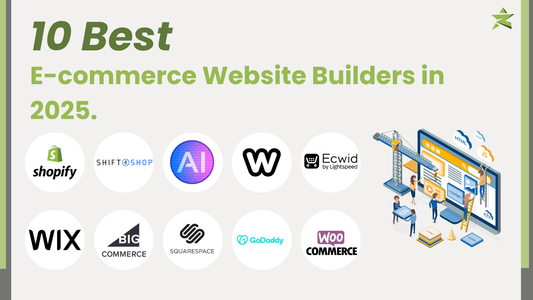In today’s fast-paced digital landscape, e-commerce and m-commerce have become crucial components of the global economy. Understanding these concepts is essential for businesses looking to capitalize on the growing trend of online shopping. Let’s explore what e-commerce and m-commerce entail, their advantages and disadvantages, and how they differ from each other.
What is E-commerce?
E-commerce, or electronic commerce, refers to the buying and selling of products and services over the internet. This encompasses various transactions, including those between businesses (B2B), between businesses and consumers (B2C), and even consumer-to-consumer (C2C) interactions. Notable examples include popular platforms like Amazon, Flipkart, Quikr, and OLX.
Advantages of E-commerce
- Wider Reach: Businesses can expand their market reach globally, connecting with customers anywhere in the world.
- Cost Efficiency: Operating online reduces the need for physical storefronts, leading to lower overhead costs.
- 24/7 Availability: E-commerce stores are always open, allowing customers to shop at their convenience.
- Personalized Shopping Experience: Using customer data, businesses can tailor product recommendations and marketing efforts.
- Diverse Payment Options: E-commerce supports various payment methods, including credit/debit cards, digital wallets, and bank transfers.
Disadvantages of E-commerce
- Security Concerns: Cyberattacks and data breaches pose risks to customer information and business integrity.
- Lack of Physical Interaction: Customers can’t physically examine products, which may lead to dissatisfaction.
- Shipping Costs and Delays: Delivery fees and wait times can affect customer satisfaction and loyalty.
- High Competition: The global nature of e-commerce intensifies competition among businesses.
What is M-commerce?
M-commerce, or mobile commerce, is a subset of e-commerce that specifically involves transactions conducted via mobile devices such as smartphones and tablets. M-commerce facilitates a wide range of activities, including mobile banking and in-app purchases.
Advantages of M-commerce
- Greater Accessibility: Customers can shop from anywhere, making the experience more convenient than traditional e-commerce.
- Enhanced User Experience: Features like geo-location services and push notifications create a tailored shopping experience for mobile users.
- Faster Transactions: Mobile payment options streamline the buying process, making it easier for consumers to complete purchases.
- Integration with Social Media: M-commerce enables seamless shopping experiences through social media platforms, enhancing marketing efforts.
Disadvantages of M-commerce
- Device Limitations: Mobile devices have varying screen sizes and capabilities, which can affect the user experience.
- Security Issues: Mobile users face risks such as phishing and malware, threatening their personal data.
- Connectivity Dependence: Shopping relies on mobile data or Wi-Fi, which may not always be available.
- Higher Development Costs: Creating mobile-friendly websites and applications can be resource-intensive.
Key Differences Between E-commerce and M-commerce
|
Attribute |
E-commerce |
M-commerce |
|
Definition |
Electronic commerce (e-commerce) |
Mobile commerce (m-commerce) |
|
Devices Used |
Desktop computers and laptops |
Mobile devices (smartphones, tablets) |
|
Age of Concept |
Established in the 1970s |
Emerged in the 1990s |
|
Accessibility |
Limited portability |
High portability |
|
Internet Requirement |
Mandatory for transactions |
Some functions available offline |
|
User Experience |
Less personalized push notifications |
Enhanced through app features |
|
Payment Methods |
Traditional methods (credit cards, etc.) |
Mobile wallets and contactless options |
|
Examples |
Amazon, Flipkart, OLX |
Paytm, Amazon mobile app |
Conclusion
Both e-commerce and m-commerce play pivotal roles in the contemporary digital economy, each with its own advantages and challenges. While e-commerce offers a broad platform for consumers using desktops, m-commerce caters to the growing number of mobile device users, providing flexibility and convenience. Businesses must recognize these differences and strategically leverage both models to enhance market reach and customer satisfaction. By doing so, they can effectively tap into the evolving landscape of online shopping and stay ahead of the competition.










